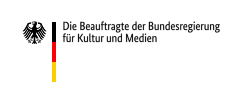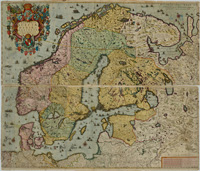Who we are
The Böckler-Mare-Balticum Foundation is a non-profit foundation under civil law. The purpose of the foundation is to ‘promote science and research in the field of artistic culture in the Baltic Sea region, in particular the Baltic countries.’ (Statutes)
History of the Foundation
On 6 May 1977, the architect Dr Erich Alfons Böckler (1904–1990) and his wife Lisbeth Marie (née Eglon, 1907–1998), who had both grown up in Tallinn / Reval, established a foundation in Bad Homburg to research and communicate the art and cultural history of the Baltic Sea region, with a particular focus on the Baltic countries. In memory of Böckler's father, it was initially named the Martin-Carl-Adolf-Böckler Foundation. It was the wish of the childless spouses to facilitate exchanges with academics from the then Baltic Soviet republics of Estonia, Latvia and Lithuania during the Cold War; contacts with Scandinavia and Finland were also important. On his death, Erich Böckler bequeathed a large part of his estate to the foundation. In 2005, the foundation merged with the Mare Balticum Foundation, which was also established by Mr and Mrs Böckler in 1998, to form the M.C.A. Böckler-Mare Balticum Foundation. In 2016 the name was changed to its current form: Böckler-Mare-Balticum Foundation.
What we do
The foundation’s mission is to support research into the art and cultural history of the Baltic Sea Region, with a focus on the Baltic states (Estonia, Latvia and Lithuania). To promote academic exchange, the foundation hosts an annual conference (Homburger Gespräch) which incorporates excursions. It also awards an annual grant, the Lisbeth and Erich Böckler Grant, for further research, networking, and acquisition of the German language, as well as twice-yearly donations towards academic publications (printing costs). It supports research projects, conferences (travel expenses), and exhibitions that further its founder’s goals. The Edition Mare Balticum is an academic publication series first released by the foundation in 2017. Alongside this support work, the foundation is also itself active. Since December 2017 it has been cooperating with other contributors on the DEHIO Portal and the DEHIO Handbook of Art Monuments in the Baltic States (DEHIO), with the generous support of the German federal government representative for culture and media (BKM), ZEIT Foundation Bucerius and Gerda Henkel Foundation.
For further information please see “Stiftungsflyer” click here.
Partner and Sponsors:








